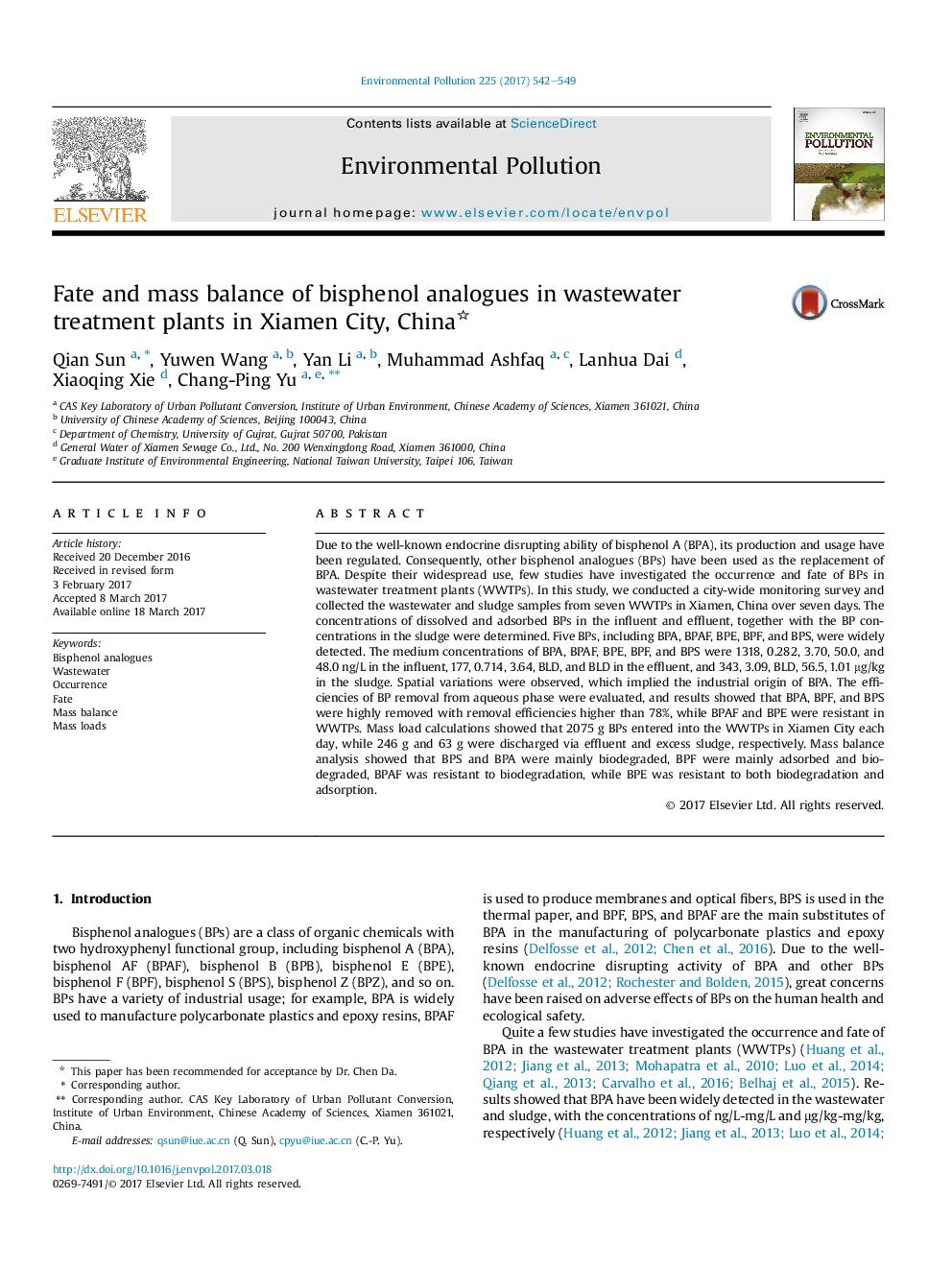| کد مقاله | کد نشریه | سال انتشار | مقاله انگلیسی | نسخه تمام متن |
|---|---|---|---|---|
| 5748963 | 1619148 | 2017 | 8 صفحه PDF | دانلود رایگان |
- BPA, BPAF, BPE, BPF, and BPS were widely detected in the wastewater and sludge.
- Spatial variations of BPs were observed, implying the industrial origin of BPA.
- BPA, BPF, and BPS were easily removed, while BPAF and BPE were more resistant.
- BP mass loads via effluent and sludge to the receiving environment were evaluated.
Due to the well-known endocrine disrupting ability of bisphenol A (BPA), its production and usage have been regulated. Consequently, other bisphenol analogues (BPs) have been used as the replacement of BPA. Despite their widespread use, few studies have investigated the occurrence and fate of BPs in wastewater treatment plants (WWTPs). In this study, we conducted a city-wide monitoring survey and collected the wastewater and sludge samples from seven WWTPs in Xiamen, China over seven days. The concentrations of dissolved and adsorbed BPs in the influent and effluent, together with the BP concentrations in the sludge were determined. Five BPs, including BPA, BPAF, BPE, BPF, and BPS, were widely detected. The medium concentrations of BPA, BPAF, BPE, BPF, and BPS were 1318, 0.282, 3.70, 50.0, and 48.0 ng/L in the influent, 177, 0.714, 3.64, BLD, and BLD in the effluent, and 343, 3.09, BLD, 56.5, 1.01 μg/kg in the sludge. Spatial variations were observed, which implied the industrial origin of BPA. The efficiencies of BP removal from aqueous phase were evaluated, and results showed that BPA, BPF, and BPS were highly removed with removal efficiencies higher than 78%, while BPAF and BPE were resistant in WWTPs. Mass load calculations showed that 2075 g BPs entered into the WWTPs in Xiamen City each day, while 246 g and 63 g were discharged via effluent and excess sludge, respectively. Mass balance analysis showed that BPS and BPA were mainly biodegraded, BPF were mainly adsorbed and biodegraded, BPAF was resistant to biodegradation, while BPE was resistant to both biodegradation and adsorption.
304
Journal: Environmental Pollution - Volume 225, June 2017, Pages 542-549
